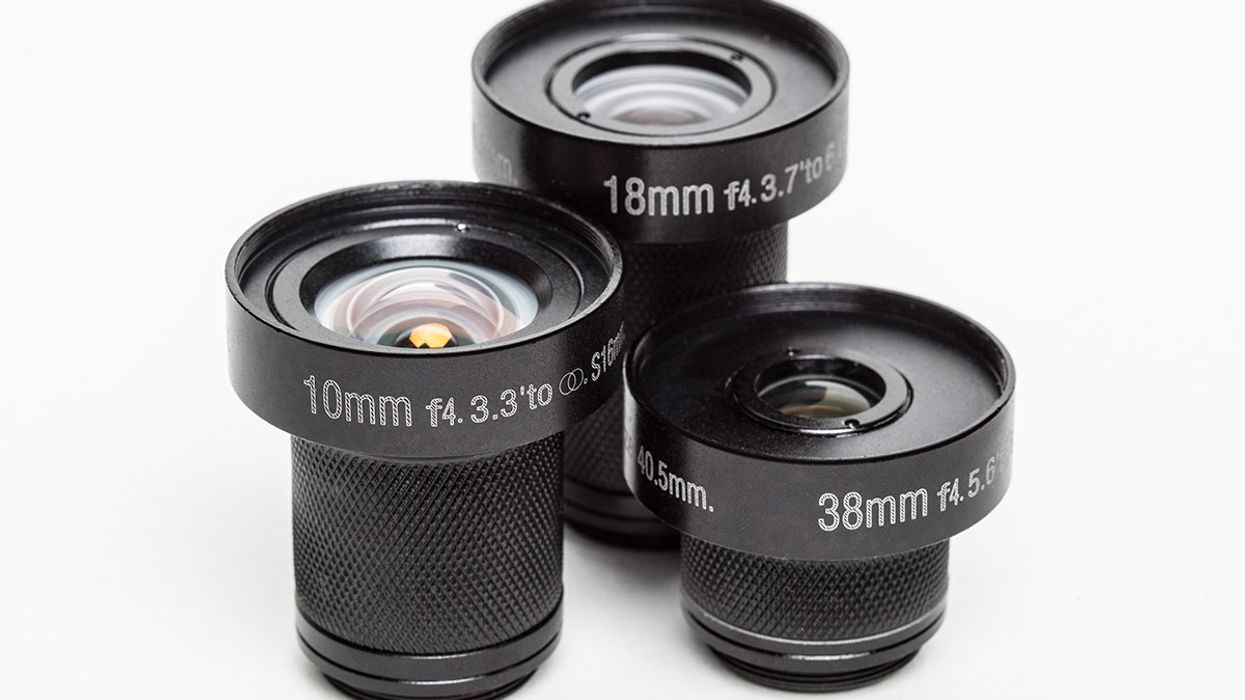New Lenses for the Digital Bolex D16 Camera Make the Traditional Follow Focus Obsolete

What good is a camera without lenses, especially those designed specifically to take advantage of the format? Digital Bolex has settled on the final design for the body of their D16 camera, which has a Kodak Super 16mm-sized sensor, but they've been in development on some low-cost but extremely sharp lenses to go along with the body (designed by Kish Optics). These lenses are probably unlike anything you've ever used before, as they are fixed focal length and fixed aperture lenses. Prime lenses with one aperture setting, you say? Absolutely, and they've also got a pretty ingenious way of focusing these lenses that will have you running and gunning in no time.
So what's so special about these lenses? I'll let Joe explain (emphasis is mine):
Normally, a lens focuses by moving some of its interior optical elements independently, and sometimes the front element too. In the case of the Kish lenses designed for the D16 all of the optical elements will move in unison when focusing.
This means we can build the focusing mechanism into the lens mount, instead of into the lens itself. And the focusing mechanism can be controlled by the crank electronically, making it a built in follow focus. This requires the purchase of an electronic lens mount, but it means you only have to purchase a focusing mechanism once, greatly reducing the price of each lens and the overall lens package. You can even use it with some vintage C-mount lenses, turning vintage glass that would be very hard to connect to a conventional follow focus into useable glass for cinema!
The exact price of each lens has not been set yet, but we think we can offer these lenses for between $200 and $300 each. And the Universal Follow Focus C-Mount should retail for between $500 and $600.
There are tradeoffs with anything related to cameras and lenses. The way to create cheap and high quality lenses (without huge volumes) is to make them in this fashion, and as an added bonus, you will be able to control the focus with the crank on the side of the camera. You might be wondering how sharp they will actually be -- Joe also answers that in his post:
The Kodak designed CCD in the D16 has the capability of resolving roughly 45 lines per millimeter resolution. As a reference, the resolution of most DSLR lenses is around 30 lines per millimeter, which is plenty for the way they capture video and for still images in relation to print resolutions. My challenge to Kish was to design lenses with higher resolution, lower distortion, more color clarity, for one quarter the cost. This is what we came up with. These lenses are rated to 45 lines per millimeter resolution, have extremely low distortion, with very high color clarity.
Here are some field of view equivalencies and more specifications for the new lenses:
10mm: S35mm = 21mm, FF = 30mm
18mm: 35mm = 36mm, FF = 50mm
38mm: 35mm = 80mm, FF = 100mm
10mm: focus range: 3.3′ (1 meter) to infinity
18mm: focus range: 3.7′ (1.12 meters) to 6.5′ (1.98 meters)
38mm: 5.6′ (1.7 meters) to 6.5′ (1.98 meters)
So these lenses are actually designed to resolve as well as the sensor itself, but there are some things that are left out to keep the cost down. You are stuck with an f/4 aperture, and the camera cannot be pushed nearly as much as a DSLR in lower light situations (though I believe it can be pushed to 800 ISO acceptably). There are also considerations about the maximum and minimum focus distances for each lens, as they all won't be able to focus completely to infinity (another reason they can be made so cheaply).
There is some good news for those disappointed by the f/4 aperture: they are working on creating a set of f/2 lenses which would give you an extra two stops over the f/4 lenses. Making them faster will make them more expensive, though, so that's why we are seeing the f/4 lenses first. Also of interest will be a set of f/8 lenses that are also in development, which I can only imagine would be cheaper than the f/4 set.
Just like the original Bolex, there will be a turret made available that will allow you to switch easily between the three lenses. Here is a prototype:
These developments make this camera even more interesting, even if it's not going to be your A-cam (though there is no reason why it couldn't be). The team at Digital Bolex have certainly thought of almost everything, and they are trying to make realistic decisions that will allow for an overall better (and still pretty inexpensive) camera. I'm fascinated by the ability to use the hand crank on the side of the camera as a focus mechanism. A follow focus adds to the bulk of any rig, but as I understand it, you won't need one with these lenses since they will be controlled by the crank.
The set will first be available to those who have already purchased the D16, and they should be for sale within the next few months, with availability ramping up just like the camera.
What do you think about this development? Aperture and focus distance issues aside, do these lenses actually make you more interested in the camera?
Link: The first set of Digital Bolex Lenses -- Digital Bolex
















